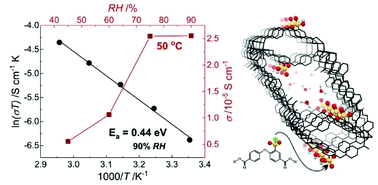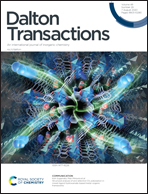One-step introduction of terminal sulfonic groups into a proton-conducting metal–organic framework by concerted deprotonation–metalation–hydrolysis reaction†
Abstract
Terminal sulfonic acid groups characterize various proton conducting materials including metal–organic frameworks (MOFs). These groups, however, show strong coordination ability that hinders their direct intact incorporation. We present a strategy for introducing pendant SO3H groups into frameworks from sulfonyl chloride precursors. The strategy using concerted deprotonation–metalation–hydrolysis reaction yields a new MOF capable of proton transport.



 Please wait while we load your content...
Please wait while we load your content...